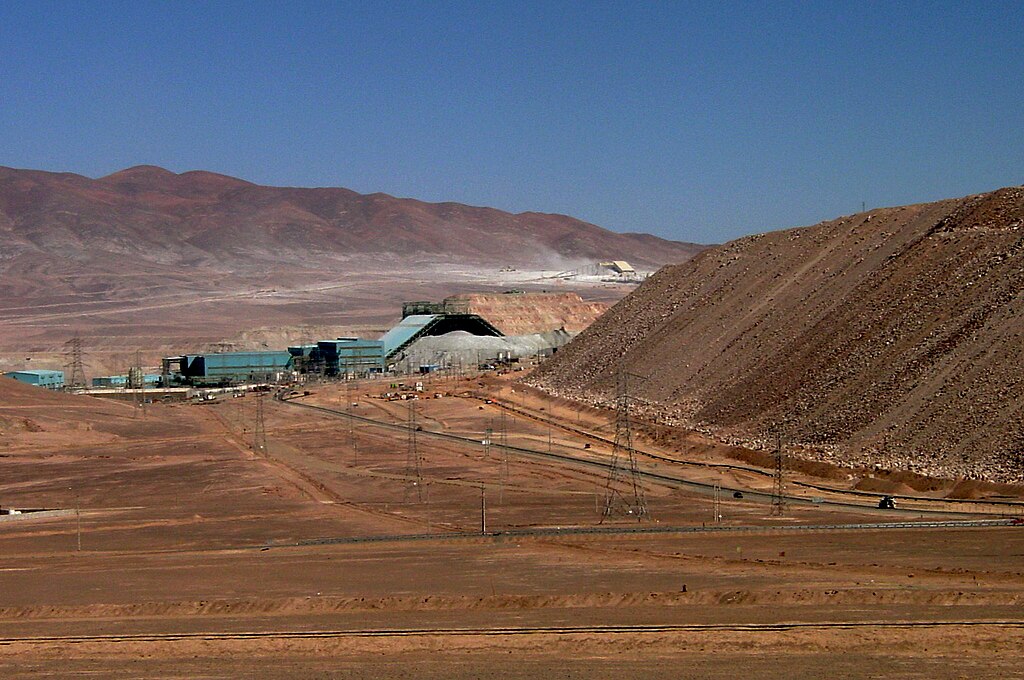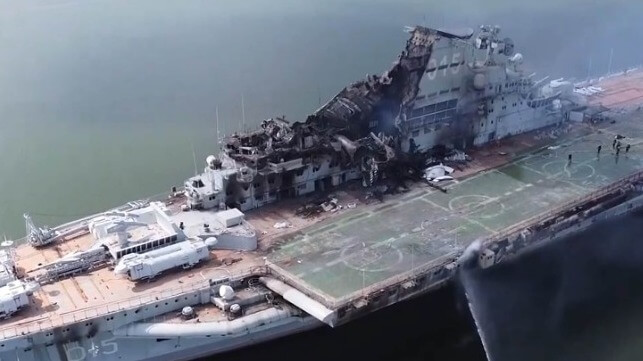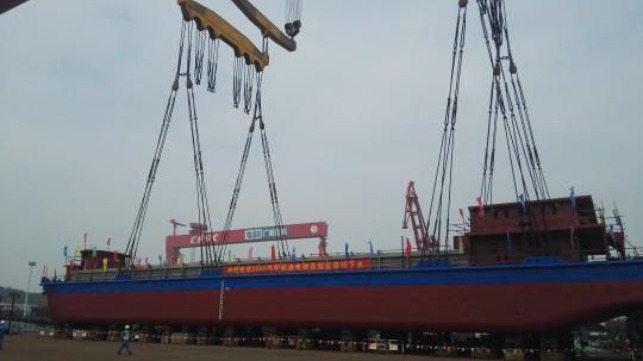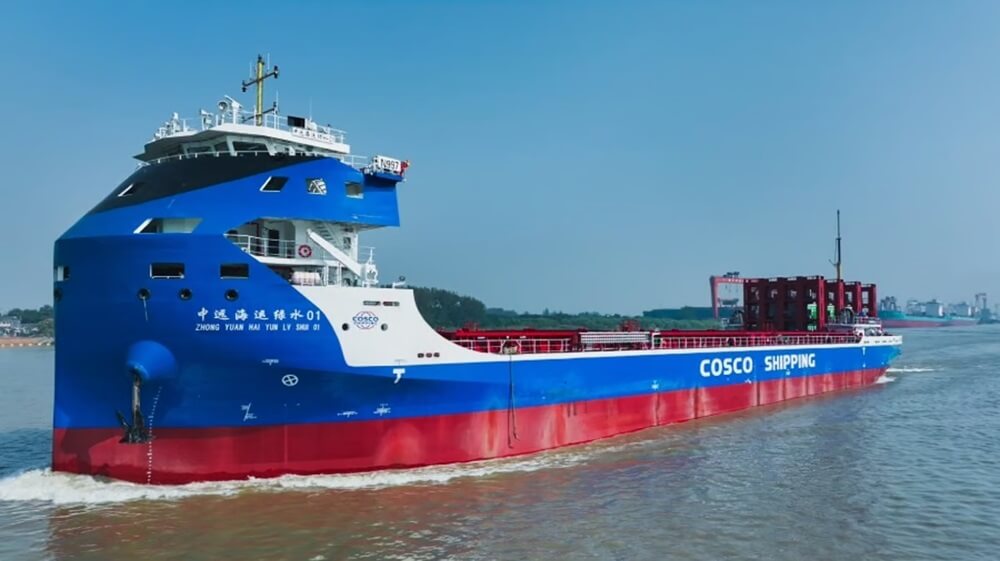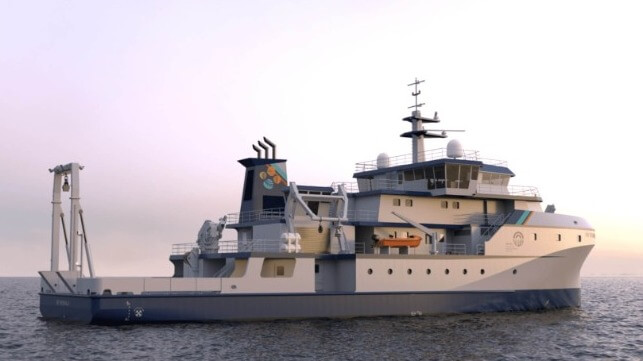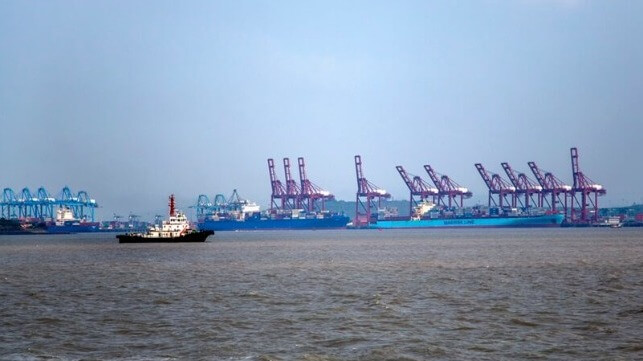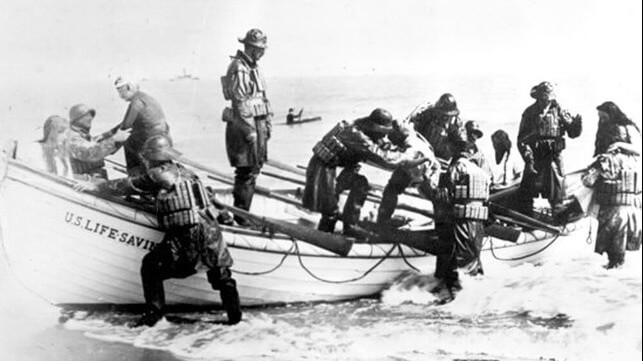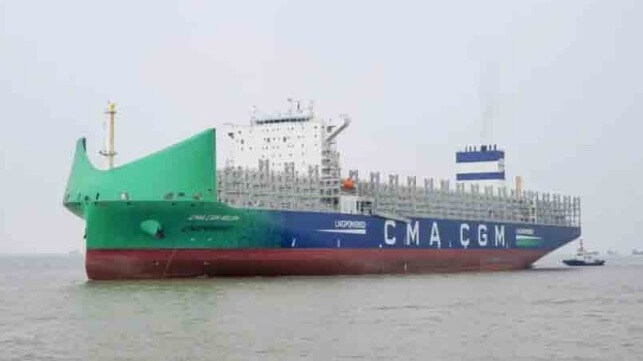In Defence of Marxism (marxist.com)

“It is a tale
Told by an idiot, full of sound and fury,
Signifying nothing.”
Shakespeare, Macbeth, 5.5.16-27)
As the drumbeat of war grows louder by the day and the well-worn machinery of propaganda goes into a hysterical overdrive, one begins to lose one’s grip on reality. Day after day, with tedious monotony, the headlines scream at us from every conceivable angle, and some that are frankly inconceivable.
How fortunate those of us who live in the ‘freedom-loving’ West are that we have the opportunity to share different views about love, life and even politics! Just think of the poor people in Russia who have only ever heard one side of the story – that side which suits the interests of the government and the ruling circle!
Those unfortunate people have to believe whatever distorted news is placed before them on a daily basis. We, on the contrary, have a vast array of news outlets, which are free to print any opinion that they wish, on any subject whatsoever.
But by some quirk of fate, our free press chooses (of its own free choice, it goes without saying) to print exactly the same story about the war in Ukraine. By an even more remarkable coincidence, this story always closely coincides with the official views of NATO, Washington, and, naturally enough, the regime in Kyiv.
And so, we fortunate citizens of the democratic West, are free to choose between one and the same view, expressed with mechanical regularity on the same subject and repeated time and time again.
Yesterday morning, 15 August 2024, The New York Times lost no time to inform us of How Ukrainian troops invaded Russia.
We are initiated into the secret of how, on 6 August, Ukraine launched “an audacious – and highly secretive – military offensive, with the aim of upending a war it has for months appeared to be losing.”
The campaign of systematic misinformation thus gets off to a splendid start even in the first sentence. For anyone that is remotely acquainted with the realities of the war in Ukraine, it is surely no secret that Ukraine did not “appear to be losing it” at all. It is losing all along the front, and losing very badly.
In fact, it was no secret to any minimally informed observer that the war, from the point of view of the Kyiv regime, was already lost, and irreparably so. But now, according to the New York Times, together with CNN, The Washington Post, the BBC, ITV, Channel 4 News, The Guardian, The Telegraph, The Financial Times, Le Monde, El País, Bild, and numerous other famous news outlets, everything is suddenly turned on its head.
All of a sudden, Ukraine is no longer losing the war with Russia, but, on the contrary, it is winning it. Its troops are depicted in innumerable television broadcasts, advancing deep into Russian territory, seemingly without any significant opposition.
 Ukraine's troops are depicted in innumerable television broadcasts, advancing deep into Russian territory / Image: Image president.gov.ua
Ukraine's troops are depicted in innumerable television broadcasts, advancing deep into Russian territory / Image: Image president.gov.uaThey are shown laughing and smiling, as if on some kind of picnic. They occupy innumerable villages on the Russian side of the border, amuse themselves by tearing down Russian flags and hoisting Ukrainian ones in their place.
It is all very jolly, and absolutely splendid for morale.
The message from Kyiv comes across loud and clear in every television interview with triumphant men and women on the Ukrainian side. Now we will teach them a lesson!
Andrew E. Kramer, the bureau chief of the NYT in Kyiv, spoke to Ukrainians living in villages near the border with Russia. He said: “One Ukrainian woman who had been evacuated from a border village was saying that it was time now for the Russians to feel what war is like.”
In the meantime, the scene in the Kremlin is portrayed in the darkest colours. The unfortunate Russians seem to be unable to react to this audacious throw of the dice.
They are said to be paralysed, like some poor rabbit caught in the headlights of an oncoming vehicle.
Western journalists, and the self-styled, ever-present ‘analysts’, are busy studying every photograph or video of the man in the Kremlin, hoping to see indications of his psychological state in the slightest movements of his face muscles.
Since they are incapable of working out a rational hypothesis on the basis of the facts, they are reduced to resorting to the mysterious arts of divination, hoping to discover the truth in the same way as the ancient seers spent their lives endlessly examining the entrails of dead chickens.
Sad to say, the efforts of our present day investigative journalists yield approximately the same results as those venerable priests of old. Indeed, it would arguably be a more profitable enterprise studying the contours of chicken gizzards than to try to discover what is on the mind of Vladimir Putin by studying his face.
Whatever one might think about the man in the Kremlin, he is a past master of concealing his innermost feelings, maintaining the same deadpan expression that one would expect to see in an experienced poker player.
And as Shakespeare once said:
“There's no art
To find the mind's construction in the face”
(Macbeth, Act 1, Scene 4)
Nevertheless, psychological warfare occupies a central role in wars in general, and has played a particularly crucial one in the present war.
The New York Times article boasts that:
“Ukraine has pushed seven miles into Russia along a 25-mile front and taken dozens of Russian soldiers as prisoners, analysts and Russian officials say. The governor of Russia’s Kursk region said on Monday that Ukraine controls 28 towns and villages there. More than 132,000 people have been evacuated from nearby areas, Russian officials said.”
The story does not lose anything in the telling. The dozens of Russian soldiers taken prisoner according to The Times immediately becomes inflated by a triumphant Zelensky to precisely one hundred. By the next day, his office informs us that the figure amounts to “hundreds”.
How many hundreds? 200, 900, a thousand? No one knows. It is better to leave the precise figure to the imagination, since imagination here has a very important role to play.
What has been achieved?
On the plus side, it is clear that the initial effect of the incursion beyond the Russian border was undoubtedly a Ukrainian success. But what does this success actually amount to? The answer to that question remains a mystery.
And what has actually been achieved by this offensive? All the media are unanimous in claiming that Ukrainian forces have “penetrated deep into Russian territory.” But how deep is deep?

The Times article says, “Ukraine has pushed seven miles into Russia along a 25-mile front.” This figure, which is taken from Russian sources, appears to be correct, although it also seems that the Ukrainians have now begun to spread out in different directions, without any clear idea of what the purpose of this is, other than sporadic acts of sabotage.
Now Russia, as we know, is a very large country indeed. We are talking about many thousands of kilometres. To penetrate 7 miles along a 25 mile front cannot be considered to be very significant penetration of Russian territory from any point of view.
Ukrainians claim that they have conquered a number of villages, although the photographs they have issued have clearly been doctored to falsify the position, at least in several cases. In any case, the villages mentioned are extremely small – barely hamlets – and have mainly been evacuated.
Apart from temporary propaganda value, the actual military significance of these gains is precisely zero. It will have absolutely no effect on the main war that is taking place in Ukraine – especially in the key area of the Donbass.
What is the point of mobilising valuable resources, which are needed for defensive purposes all along the front line, for the sake of occupying a few tiny villages on the Russian side of the frontier?
Even if we accept the most ambitious claims of the Ukrainian side, it is abundantly clear that the seizure of those villages will be very short lived. The Russian forces are already massing for a counter-attack, which will drive them out with very heavy losses in both lives and equipment.
So what was the point of it?
An important offensive, involving several brigades of Ukrainian army, moreover, brigades drawn largely from Ukraine’s very limited reserves and including many of its most effective and elite forces, ought to have clearly defined objectives.
But to this day, no clear explanation of those objectives have ever been given by anyone in Kyiv. The reason for this mysterious silence will become clear to us later on. Meanwhile, it remains a matter of speculation in the western media.
The only half-reasonable explanation that has been so far provided is that the Kursk offensive was intended to oblige the Russians to withdraw forces from the central front in Donbass, thus relieving pressure on the Ukrainian defences, which are severely stretched and rapidly crumbling.
If this were so, then it has clearly failed in its purpose. Apart from a small number of Chechen fighters that have been sent to Kursk, the Russian forces that have been withdrawn from Donbass appear to have been negligible.
In fact, articles have already appeared in the Ukrainian media in which the forces attempting to resist the implacable Russian advance on places such as Pokrovsk, loudly complain that the withdrawal of Ukrainian forces has so weakened them that they are on the point of collapse.
Ukraine's National Guard spokesperson, Ruslan Muzychuk, on Thursday admitted that Kyiv's offensive in Russia's Kursk region has not slowed Moscow's advance.
“As seen from both official reports by the General Staff and accounts from units and fighters on the front line, the pace of Russia's offensive and the intensity of assaults are not decreasing,” Muzychuk told a local broadcaster.
Since Ukraine launched the Kursk offensive, “I would say things have become worse in our part of the front," said Ivan Sekach, spokesperson of Ukraine's 110th Mechanised Brigade, which is currently deployed in the Pokrovsk district in the Donetsk region. “We have been getting even less ammo than before and Russians are pushing,” he told Politico.
Over the past 24 hours, Russia occupied the villages of Zhelanne and Orlivka and made advances in New York (sic!), Krasnohorivka, Mykolaivka and Zhuravka in Donetsk, according to DeepState, a war-mapping project close to Ukraine's defence ministry.
The General Staff of the Ukrainian Armed Forces did not confirm or deny the report, saying only that intense fighting was under way in those areas, and that Kyiv was concentrating its efforts on the city of Pokrovsk in the Donetsk region.
Let us speak frankly. Contrary to the impression created by the Western media, the decisive front in the war in Ukraine is not the battle for Kursk, or even the Kharkiv front. It is Donbass, where the Russians are advancing slowly but implacably, driving the Ukrainians out of one key point after another.
Russia's defence ministry said that Russian forces had clocked up a host of wins along the front, from Kharkiv region to Luhansk and Donetsk.
The main Russian objective at the moment, however, appears to be the fortified point of Pokrovsk, which is the main logistical hub of the Donbass region, and also the last fortified line of defence before the Dnieper river. The fall of Pokrovsk would precipitate a collapse of defence lines across eastern Ukraine.
The frontline towards Pokrovsk has been rapidly disintegrating in the past days and the latest frontline is only 11 km from the edge point of Pokrovsk city itself. According to Ukrainian media, the head of the region's Pokrovsk military administration Serhiy Dobryak says the “enemy has almost reached the edge of our community”.
In a post on Telegram, the head of the city's military administration says it's important residents “don't delay” their evacuation, as Russian troops are “rapidly approaching the outskirts of Pokrovsk”.
Zelensky’s military credentials
If he had the slightest grasp of tactics and strategy, Zelensky would immediately acknowledge that the Kursk adventure has ended in failure and order the withdrawal of Ukrainian forces, in order to preserve whatever could be preserved of those valuable and scarce resources. But he shows no sign whatsoever of doing that.
This is absolutely typical of the Ukrainian leader, a man who, we must remind ourselves, has absolutely no military experience or grasp of the art of war. He only appears to know one command – attack! The words ‘retreat’ or ‘withdraw’ does not enter his very limited vocabulary.
This fact has become clear at every decisive junction of the Ukrainian conflict. It has had extremely dire consequences, causing one disastrous defeat after another. And yet he does not learn.
Yesterday, reporting on a meeting of the Ukrainian general staff, Zelensky reported on the situation in Donbass, which has now become critical:
“Today at the Staff meeting, I received a report from Commander-in-Chief Syrskyi. Our key defence directions at the frontline: Toretsk, Pokrovsk, and others.
“These areas are currently facing the most intense Russian assaults and are receiving our utmost defensive attention.
“Priority supplies—everything that is needed—are being sent there.”
He does not mention the fact that the defence of these decisive areas has been seriously weakened by his orders to withdraw troops to support his offensive in Kursk!

It seems absolutely incredible that at such a critical moment, Zelensky still persists in his insane plan to invade Russia! Having devoted just a few words to the desperate position of his forces in “Toretsk, Pokrovsk, and others” (that is to say, all along the central line of the conflict), he immediately returns to his own personal obsession, which is devouring vital forces and equipment to absolutely no logical purpose.
The conquest of Pokrovsk by Russia will be of immeasurably more importance to the outcome of the war than any number of small villages that the Ukrainians managed to temporarily occupy in Kursk.
There is absolutely no hope that they will occupy them for any length of time. And their defeat – which is inevitable – will be accompanied with a staggering level of losses. Zelensky continued in his report:
“Separately, the Commander-in-Chief [Syrskyi] reported on the operation in Kursk Oblast. There has been new progress. Our “exchange fund” has been further replenished.
“Additionally, General Syrskyi reported the successful liberation of the city of Sudzha from Russian forces. A Ukrainian military commandant's office is being established there.
“Several other settlements have also been liberated. In total, more than eighty. I extend my deepest gratitude to every one of our warriors who has made this possible.”
In short, Zelensky talks like a man in a dream, completely divorced from reality.
Was Russia taken by surprise?
If it is true that Russia was taken by surprise by the Ukrainian offensive in Kursk, that would undoubtedly represent a catastrophic failure of Russian intelligence. That is the interpretation that has been widely circulated in the western media. However, it is hard to justify this interpretation without further critical examination.
It is well known that Russian intelligence services are among the most efficient in the world. They have at their disposal a vast apparatus of surveillance, which they inherited from the KGB and the Soviet Union. This apparatus will have been modernised and updated to keep abreast of all developments on the war front.
The existence of spy satellites and drones, which maintain a constant observation of every development on the front lines is undoubtedly supplemented by the presence of spies and informants who will be active at every level of political and military activities in Kyiv.

Such an apparatus is hardly likely to be taken by surprise by even the smallest movements in Ukraine. And what we have here is not a small movement, but a large-scale movement of troops, tanks and armoured vehicles on a very sensitive area of the front.
For the Russians not to have detected those movements, they must have been blind, deaf and dumb. This was clearly not the case.
There are other factors which are very hard to explain. In the area where the incursion took place, the Russians had conveniently cleared their minefields of mines. The reason for this may well have been in preparation for Russian advance across the border.
However, it presented a very tempting target for Ukrainians – too tempting for Zelensky to resist, in fact. It was almost as if the Russians were inviting an attack, like a man who places a tempting lump of cheese in a mousetrap.
Is it conceivable that the Ukrainians have in fact fallen into a trap? Such a hypothesis will be indignantly denied by all those western commentators who insist on presenting what was clearly a senseless adventure as an act of military brilliance.
But with due respect to our Western ‘experts’, such a hypothesis cannot be logically excluded. And in fact, it seems far more credible than the alternative explanation, according to which, for unexplained reasons, Russian intelligence was unable to detect something that would have been obvious to a six-year-old child of average intelligence.
If we exclude the possibility that some kind of trap was prepared by the Russians, then we are compelled to draw another conclusion, namely, that Zelensky fell into a trap of his own making. And he will now be compelled to live with the consequences of his mistake.
Was the West involved?
The next question which must be asked is: was the West involved in this move, or even informed of it in advance? The Times says the following:
“The operation surprised even Kyiv’s closest allies, including the U.S., and has pushed the limits of how Western military equipment would be permitted to be used inside Russian territory.”
The White House says Ukraine did not provide advance notice of its incursion and that Washington had no involvement. But these claims are met with scepticism in Moscow.
An aide to the Kremlin has claimed that NATO and the West were directly involved in the planning for Ukraine's attack on Russia's Kursk region and that denials of their involvement are lies.
And indeed, why should the Russians believe anything that is said by the Americans, since they have consistently lied and deceived public opinion from the very word go?
Actually, there is good reason to believe that the Americans were informed of Zelensky’s plans before the offensive took place – because it seems the Russians themselves may have informed them! One curious phone call stands out. On 12 July, Russian Defence Minister Andrey Belousov took the step of directly calling Pentagon chief, Lloyd Austin.
This in itself is unusual enough. Since the war began in February 2022, Austin has only had five phone calls with the Russian Defence Minister – almost all of which were initiated by the US in order to avoid escalating the conflict.
But according to three official American sources in The New York Times, it was Belousov who rang Austin on this occasion to warn him that the Russians had uncovered a Ukrainian covert operation against Russia.
The precise nature of that operation was not disclosed. What happened next remains unclear. Apparently, Pentagon officials were taken by surprise by news of the Ukrainian’s plans. When asked directly by Belousov if he was aware of the Ukrainians’ planned operation, Austin denied he had any knowledge of it, and furthermore said that he would warn Ukrainians not to carry it out.

In the light of subsequent events, it is difficult not to draw the conclusion that the covert operation referred to was precisely the offensive in Kursk, which, with or without the permission of Washington, Zelensky was already planning.
The reason why this was regarded by the Russians as a serious threat was the following. The only military strategic target of any value in the Kursk region is the Kursk nuclear power plant on the edge of the town of Kurchatov, west of the regional capital, Kursk.
If the Ukrainians could seize that installation, it would undoubtedly have given them leverage to blackmail Russia in some way. This was without any doubt the real objective of the Ukrainian offensive in Kursk, although this was never made clear by the Ukrainians.
The offensive has failed
The speed and ease with which the Ukrainians were able to advance into Russian territory in the first instance took many people by surprise – especially the Ukrainians themselves. This again demands some explanation.
Did the Russians not have sufficient forces to repel the invaders and drive them back over the frontier? They certainly have enough reserves inside Russia to make it unnecessary to withdraw forces from Donbass (another declared aim of the Ukrainians).
Yet the only forces known to be present in the area at the time were small groups of special forces (commandos), Chechens and members of the Wagner outfit. These have been engaged in ambushes and hit-and-run attacks which, together with air attacks and drones, have in fact inflicted very serious casualties on the Ukrainians – a fact which has been completely played down by the western press.
However, so far, the Russians have avoided an all-out battle with the invaders, preferring to minimise casualties on their own side, while maximising Ukrainian losses in both manpower and vehicles, which have suffered a very heavy toll for negligible results.
The Russians have built a heavily fortified line, which blocks further Ukrainian advance, compelling the Ukrainians to disperse their forces into small units, mainly devoted to sabotage.
However, the main target – the nuclear power plant – remains beyond their reach. It has been heavily fortified by the Russians, and this makes it all but unassailable by the invading forces.
Thus, the Ukrainians find themselves effectively in a trap, denied access to their most important target, remaining in possession of a number of mostly empty villages (the population has mainly been evacuated) and now condemned to more or less aimless activities, while awaiting a serious counter-blow from the Russian side.
How long it will take for the Russians to gather sufficient forces to launch a shattering counter-offensive, it is impossible to say. But troops are pouring in from all sides, and, when the commanders are satisfied that Ukrainians have been sufficiently weakened by bombing and shelling, they will move in for the kill.
The whole thing will therefore be exposed before the eyes of the world as a senseless and reckless adventure, which will only serve to weaken the already crumbling Ukrainian defences and prepare the way for ultimate collapse.
Kursk: a turning point in the war
It may be true that the Kursk adventure will be a turning point in the war in Ukraine, but not in the sense understood by Zelensky and his admirers in the West. On the contrary, it will have caused irreparable harm to Ukraine’s defences in the face of a renewed Russian attack, which is clearly in preparation.
There are rumours – the veracity of which I am unable to ascertain – that Oleksandr Syrskyi, Ukraine's top military commander, is attempting to distance himself from the Kursk affair, attempting to shift the blame onto the shoulders of Zelensky.
If it is true that general Syrskyi, who is considered to be a ‘yes man’ of the president, is trying to disassociate himself from his reckless and irresponsible Kursk adventure, it is an ominous sign of developing cracks within the ruling circles in Kyiv.

The argument of Zelensky that the Kursk offensive was intended to provide the Ukrainians with a stronger position in future negotiations with Russia is now revealed as an empty dream.
Far from entering into negotiations with Russia, the Kursk adventure has removed any possibility for negotiations to take place. Putin has made this perfectly clear. And the action of ‘invading’ Russian territory has undoubtedly strengthened his hand and hardened Russian public opinion against the Kyiv regime.
Finally, some western commentators are beginning to wake up to the fact that this escapade will not only end in defeat, but in a complete and disastrous military collapse.
In one sense, the offensive has been a spectacular success. It has provided a major boost to the noisy media circus, which is always anxious to seize upon any and every Ukrainian success – whether real or imaginary is a matter of complete indifference – and exaggerate it to the nth degree.
The media reports have been overflowing with gushing coverage of the gallant Ukrainains fighting and inflicting humiliating defeats on an evil enemy. However, if you dig a little deeper beyond the media hype, a note of doubt and even scepticism is not hard to detect.
Even the most enthusiastic cheerleaders for the offensive grudgingly admit that it was a “very risky gamble.” That goes for The New York Times itself. In analysing these events in the very same article, it says the following:
“This offensive is a major gamble for Ukraine. If its troops can hold territory, they could stretch the capacity of Russian soldiers, deliver embarrassment for Putin and get a bargaining chip for any peace negotiations. But if Russia manages to push back, Ukrainian military leaders could be blamed for giving the Russians an opening to gain more ground.”
Zelensky obviously hoped that his offensive would cause widespread demoralisation and panic among the Russian population. In reality, it has had the opposite effect. The spectacle of Ukrainian forces, armed with western-supplied weapons and tanks, will have convinced them that prospective Ukrainian membership of NATO indeed represents a direct and present threat to Russia.
Far from undermining Putin’s position, it will galvanise support for the war. It is already leading to an increase in the numbers of recruits to the Russian army. This at the same time as Ukraine finds it necessary to use brute force to drag unwilling recruits off the streets to be sent to what is increasingly seen as a slaughterhouse.
The people of Ukraine are rapidly waking up to the fact that their so-called friends and benefactors in the West are keen to fight to the last drop of their blood.
